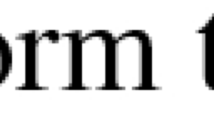Abstract
Many algorithmic methods in mathematics can be seen as constructing canonical reduction systems for deciding membership problems. Important examples are the Gauss elimination method for linear systems, Euclid’s algorithm for computing greatest common divisors, Buchberger’s algorithm for constructing Gröbner bases, or the Knuth-Bendix procedure for equational theories. We explain the basic concept of a canonical reduction system and investigate the close connections between these algorithms.
Preview
Unable to display preview. Download preview PDF.
Similar content being viewed by others
References
Avenhaus, J.: Reduktionssysteme. Springer, Heidelberg (1995)
Book, R.V., Otto, R.: String-Rewriting Systems. Springer, Heidelberg (1993)
Knuth, D.E., Bendix, P.B.: Simple Word Problems in Universal Algebra. In: Leech, J. (ed.) Computational Problems in Abstract Algebra, pp. 263–297. Pergamon Press, Oxford (1970)
Winkler, F.: The Church–Rosser property in computer algebra and special theorem proving: An investigation of critical–pair/completion algorithms, Dissertation Univ. Linz, Austria, VWGÖ Wien (1984)
Winkler, F.: Polynomial Algorithms in Computer Algebra. Springer, Wien New York (1996)
Author information
Authors and Affiliations
Editor information
Editors and Affiliations
Rights and permissions
Copyright information
© 2009 Springer-Verlag Berlin Heidelberg
About this paper
Cite this paper
Winkler, F. (2009). Canonical Reduction Systems in Symbolic Mathematics. In: Bozapalidis, S., Rahonis, G. (eds) Algebraic Informatics. CAI 2009. Lecture Notes in Computer Science, vol 5725. Springer, Berlin, Heidelberg. https://doi.org/10.1007/978-3-642-03564-7_7
Download citation
DOI: https://doi.org/10.1007/978-3-642-03564-7_7
Publisher Name: Springer, Berlin, Heidelberg
Print ISBN: 978-3-642-03563-0
Online ISBN: 978-3-642-03564-7
eBook Packages: Computer ScienceComputer Science (R0)




